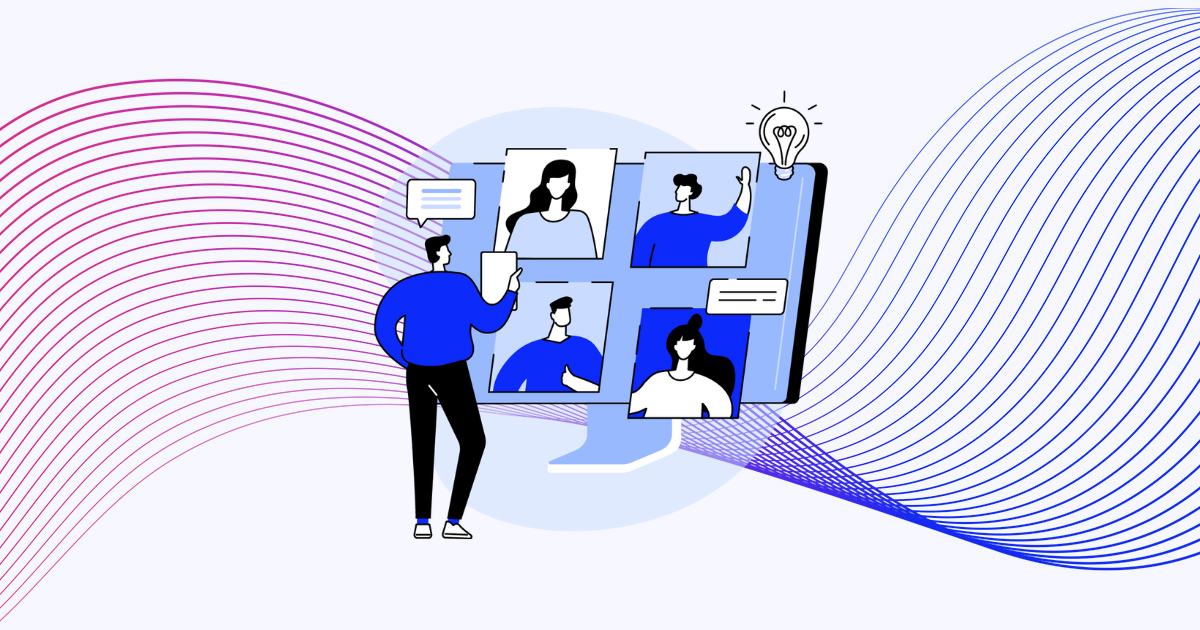Four strategies to support ERG leaders for the long haul
4 min read
| Published on
Behind every thriving employee resource group (ERG) is a leader balancing advocacy, community building, and strategy, all on top of their day jobs. While leading an ERG can offer employees meaningful opportunities to connect with senior leaders, grow their careers, and pursue their passions, it can also lead to burnout and turnover.
The wellbeing of ERG leaders directly impacts the success and sustainability of the ERG, and by extension, the engagement and health of your workforce.
Here are four strategies to support ERG leaders for the long haul:
1. Recognize the symptoms of burnout and respond.
Burnout shows up in many ways: in physical symptoms like fatigue and sleep disruption, and behavioral changes such as irritability or withdrawal.
At ENERGIZE 2025, Laura Phen, Senior Counselor, EAP, Humana emphasized that the first step is to notice when ERG leaders are showing signs of burnout. The second is to check in: “Hey, I've noticed XYZ. I just wanted to check in with you and see how you're doing.”
Organizations can support ERG leaders by treating burnout as a systemic issue, not just an individual one. Start by:
- Offering access to wellness programs and employee assistance resources.
- Recognizing ERG leaders’ contributions publicly and privately, including in performance reviews and town halls.
- Empowering leaders by involving them in decisions around programming and funding.
It’s also important to acknowledge that burnout doesn’t affect everyone equally. Women, LGBTQ+ individuals, people with disabilities, and frontline workers report higher levels. Serena Borghero, DEI Global Director, People Engagement, Steelcase recommends checking in with these employees intentionally, encouraging self-care, and making sure they know a support system is in place.
2. Plan for what’s next before you need to.
Succession planning is part of the lifecycle of an ERG.
Long-standing ERG leaders often hold deep institutional knowledge. But when they step down, that wisdom can disappear unless there’s a plan in place. Co-chair models, consistent check-ins, and mentoring relationships help preserve momentum and ensure continuity.
Start by identifying emerging leaders—those who show up, get their hands dirty, and demonstrate commitment. Tap them on the shoulder early. The moment someone doesn’t enjoy being an ERG leader anymore or it becomes stressful, help them step down and hand it off to someone else.
Leadership transitions should be intentional, not reactive. Build documentation, clarify roles, and create space for new leaders to learn and grow.
3. Align ERG strategy with business strategy.
One of the most powerful ways to support ERG leaders, particularly for executive sponsors, is to help them connect their work to the company’s strategic goals.
When ERG leaders understand how their efforts contribute to business outcomes, they gain clarity, confidence, and influence. This alignment also helps secure executive buy-in and long-term support.
Borghero shared examples of how ERGs are driving business impact:
- A veterans ERG partnered with talent acquisition to strengthen the pipeline of veteran hires.
- A disability ERG helped shape inclusive workspace design, directly influencing product and workplace innovation.
These initiatives didn’t happen in isolation. They were co-designed with business units, giving ERG leaders a seat at the table and a stake in the outcome.
To support ERG leaders in this work:
- Encourage them to set annual goals that include at least one business-aligned objective.
- Help translate ERG impact into business language—recruitment, retention, innovation.
- Provide access to data and metrics that demonstrate value, such as engagement scores or career mobility trends.
4. Lead together, not alone.
Too often, ERG leaders carry the weight of programming, advocacy, and strategy on their own. But the most resilient ERGs create cultures of shared responsibility, where leadership is distributed, not concentrated, and collaboration is the norm.
Supporting ERG leaders means creating a mindset shift from solo to shared leadership. When participation lags or burnout looms, Phen suggests being direct and asking colleagues: “What’s preventing you from stepping up? What are the roadblocks? Let’s talk about it. Let’s problem solve it together.”
Shared leadership also means designing with, not for. Co-create goals with ERG members, clarify ownership of each objective, invite feedback, and tap into each person’s strengths.
“Building trust is fundamental,” said Borghero. “Create safe spaces where everyone can practice inclusive communication, curiosity, vulnerability, and leaders can embrace those values that the company says matter.”
As Phen shared, this work is well worth the effort: “I'd like to challenge everybody to shift their thinking from working from the side of my desk to working from my heart. Because if you work from your heart, yes, you can get tired, but there's also this endless amount of inspiration and energy that can come from that.”
Learn more
- Discover more findings from ENERGIZE 2025 — where ERG members, leaders, and sponsors discover the latest research-backed trends to advance their work.